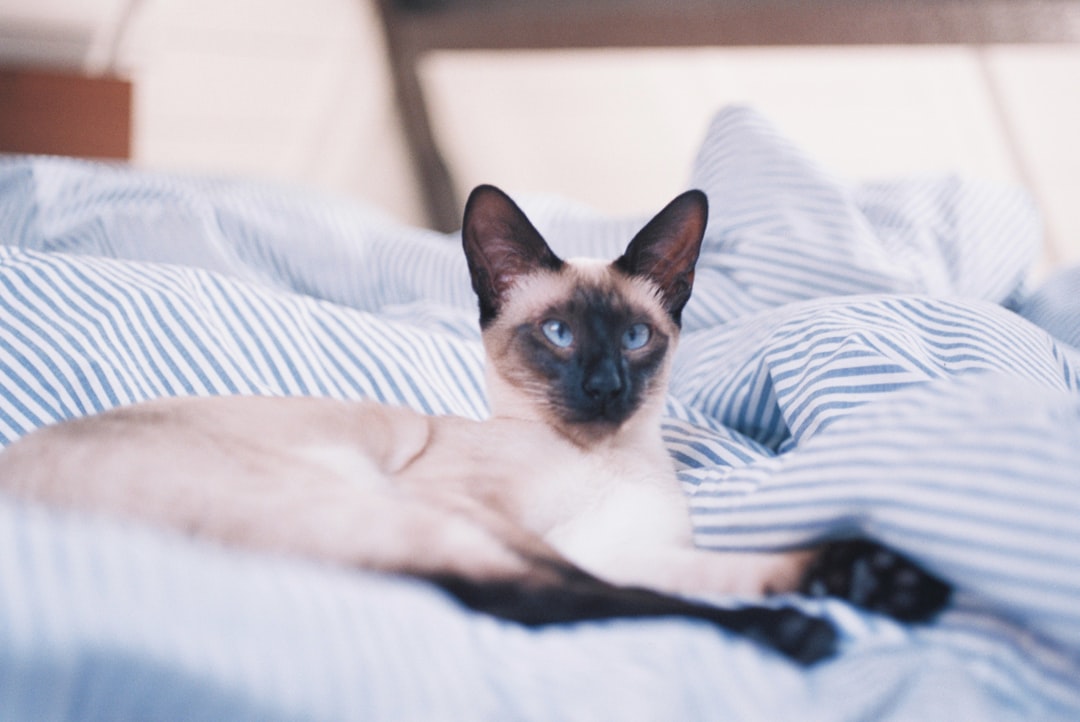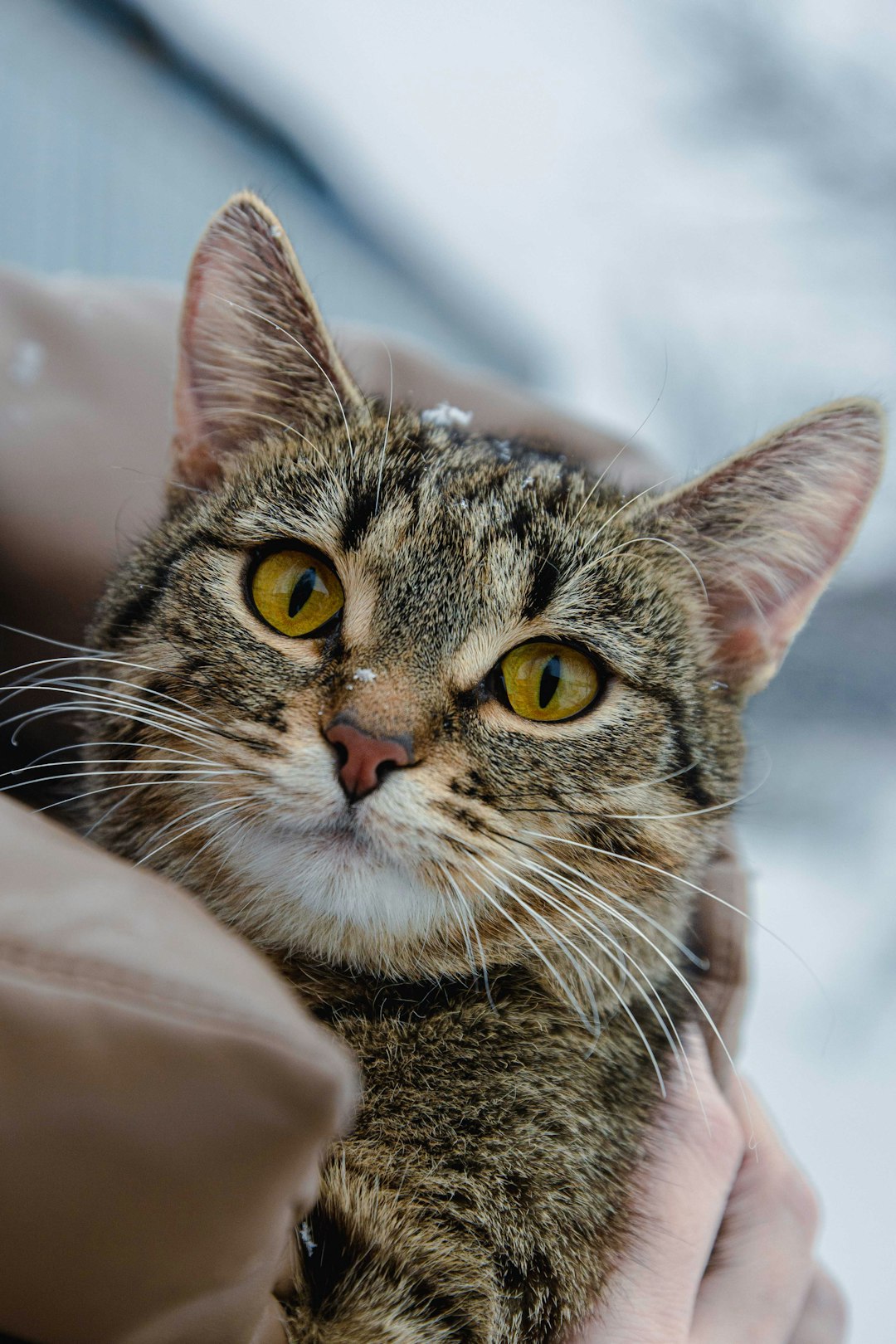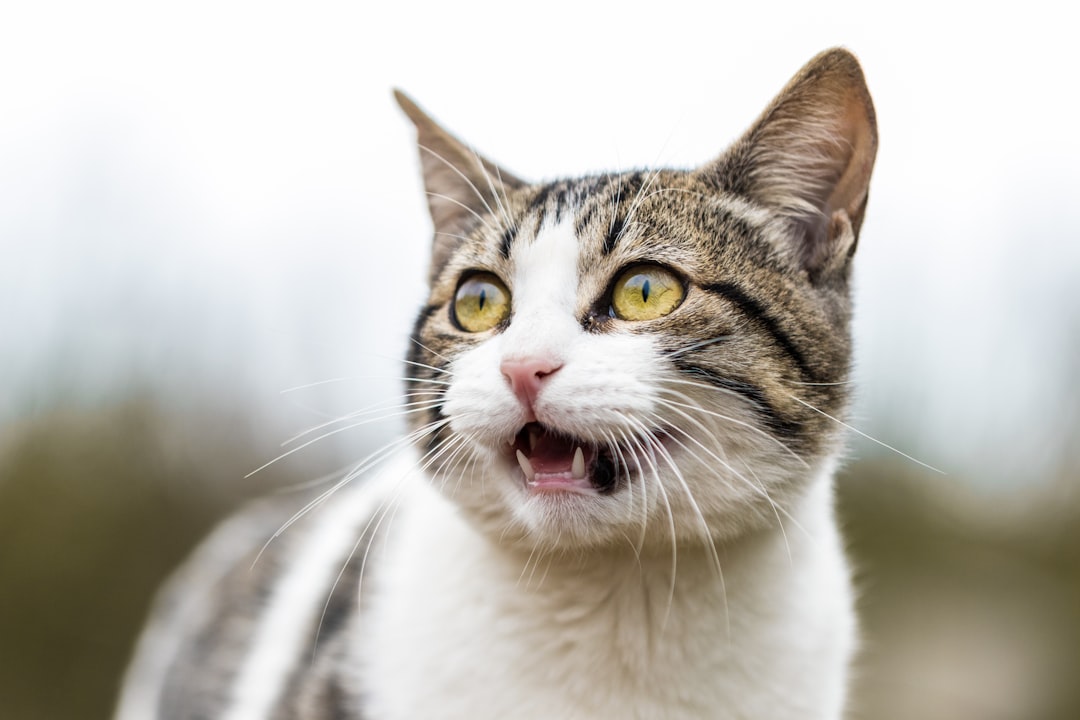As winter approaches and temperatures drop, it becomes essential to ensure our feline friends remain comfortable and safe, especially if they spend time outdoors. In this comprehensive guide, we will explore the necessity of heated cat houses, highlighting the numerous benefits they offer for outdoor use. You’ll discover the various types available in the market, along with key features to consider when selecting the perfect heated cat house outdoor for your space. Moreover, we’ll provide practical tips on setup and maintenance, ensuring your cat enjoys a cozy retreat all season long. Join us as we delve into the world of heated cat houses and learn how to create a comfortable haven for your beloved pet.
Understanding the Need for Heated Cat Houses
As pet owners, we constantly strive to ensure the comfort and safety of our beloved felines. This becomes even more critical when considering outdoor cats or those who enjoy spending time outside. Understanding the need for heated cat houses hinges on a variety of factors, including environmental conditions, a cat’s natural behavior, and the distinct needs of felines versus humans.
The Importance of Temperature Regulation
Cats are incredibly resilient animals, but they are still vulnerable to extreme temperatures, whether it’s the chill of winter or the swelter of summer. Here’s why understanding temperature regulation is crucial:
- Feline Comfort: Cats thrive in a warm environment. When exposed to cold, they may seek shelter in unsuitable locations, risking their health.
- Hypothermia Risks: Extended time in low temperatures can lead to hypothermia or frostbite. Heated shelters can mitigate these risks by providing a safe haven.
- Health Concerns: Cold weather can exacerbate health issues like arthritis, making it essential to keep older or ailing cats cozy and warm.
Behavioral Patterns of Outdoor Cats
Understanding the natural behaviors of outdoor cats sheds light on the necessity of heated cat houses. Consider the following observations:
- Instinctual Shelter Seeking: Felines instinctively look for protection from harsh weather. A heated house provides both safety and warmth, encouraging them to return to a familiar and safe environment.
- Exploration and Retreat: Cats are curious explorers. A heated cat house is not just a shelter but also a retreat where they can relax, play, and retreat from inclement weather.
Benefits of Providing Extra Warmth
The need for warmth cannot be underestimated, especially when you consider the unique benefits it offers both physically and emotionally to your feline friend.
- Enhanced Well-Being: Heated environments reduce stress for outdoor cats, creating a positive atmosphere that encourages them to stay close to home.
- Improved Behavior: Cats with access to a heated cat house exhibit fewer behavioral issues, as warmth and security contribute to a less anxious demeanor.
Key Factors to Consider
Identifying why heated cat houses are essential involves assessing specific factors, including the following:
| Factor | Description |
|---|---|
| Climate Conditions | Analyze your local weather patterns, including temperature drops and precipitation intensity. |
| Duration Outdoors | Consider how much time your cat spends outdoors and adjust to meet their needs. |
| Age and Health | Recognize that older or ailing cats require more warmth than their younger counterparts. |
Summarizing the Need for Heated Cat Houses
In summary, the necessity of heated cat houses is tied to various factors, including climate considerations, feline behavior patterns, and overall health needs. By providing a heated cat house outdoor, you ensure that your cat has a safe, warm place to retreat, significantly enhancing their quality of life during colder months. Investing in a heated shelter not only aids in physical well-being but also nurtures emotional stability, fostering a happier and healthier outdoor existence for your furry friend.
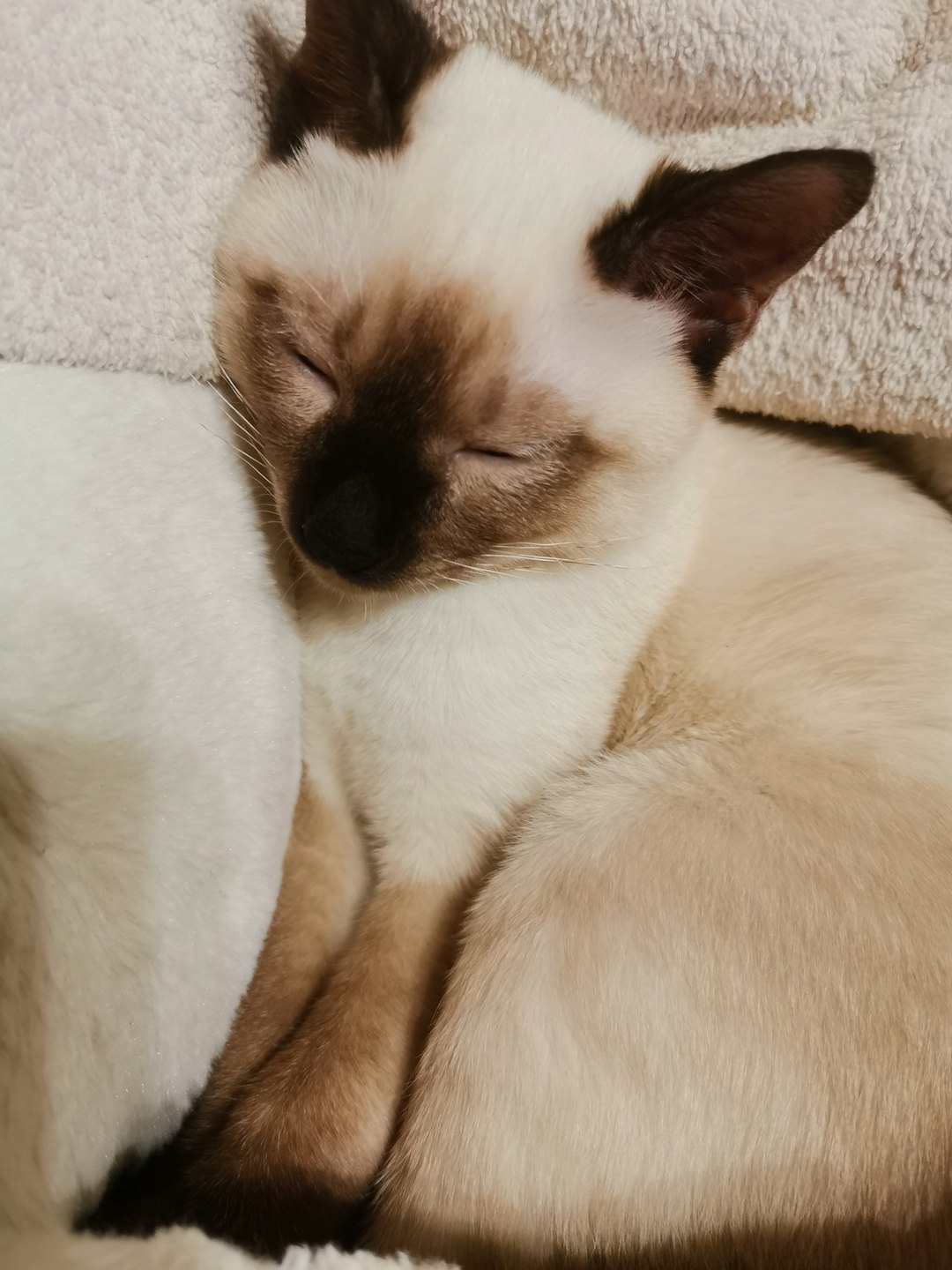
Benefits of Heated Cat Houses for Outdoor Use
Providing a warm, safe environment for your feline friend is essential, especially for outdoor cats who face harsher weather conditions. Heated cat houses outdoor are not just a luxury; they serve several critical functions that enhance your cat’s overall well-being. Below are some compelling benefits of investing in a heated outdoor cat house.
Protection from Harsh Weather Conditions
One of the primary benefits of a heated cat house is its ability to shield your cat from severe weather conditions. Outdoor cats often contend with:
- Extreme Cold: A heated house ensures your furry friend stays warm and comfortable, discouraging hypothermia and frostbite.
- Rain and Wind: With a heated shelter, cats have a safe haven that protects them from rain, snow, and wind, promoting their health and well-being.
- Sun Exposure: During hot weather, many heated cat houses are designed with cooling features, allowing cats to take refuge from direct sunlight while still staying comfortable.
Enhanced Comfort and Stress Reduction
A heated cat house doesn’t just keep cats warm; it also fosters a sense of security and comfort.
- Familiar Space: A designated heated house creates a familiar environment for your cat, reducing anxiety related to unfamiliar living conditions.
- Restful Sleep: The warmth provided encourages better sleep patterns, essential for their health and happiness. Warmth often leads cats to rest longer and recover from daily stresses more effectively.
Health Benefits
Keeping your outdoor cat warm by offering a heated house may also contribute to positive health outcomes:
- Improved Quality of Life: Less exposure to the elements means your cat is less likely to develop health issues such as respiratory diseases that can arise from prolonged cold exposure.
- Better Immune Function: Cats that maintain a stable, warm body temperature are better able to fend off infections and illnesses, leading to a healthier and longer life.
Increased Longevity
By offering a cozy, heated shelter, you are playing a significant role in extending your cat’s lifespan. The following table outlines various factors contributing to increased longevity through the use of heated cat houses:
| Factor | Importance |
|---|---|
| Protection from Illnesses | Reduces the risk of hypothermia and colds |
| Stress Relief | Less anxiety leads to healthier aging |
| Enhanced Nutrition | Cats spend more time eating and resting |
| avoiding accidents in harsh weather | Keeping cats from wandering in unsafe conditions |
Encouragement of Outdoor Exploration
Interestingly, many cats prefer to be outdoors. A heated cat house outdoor encourages this natural behavior while providing safety.
- Freedom to Roam: With a cozy retreat, cats are more likely to explore their surroundings rather than retreating indoors entirely.
- Wild Instincts: A proper shelter allows outdoor cats to indulge their natural instincts without the constant worry of extreme weather, promoting overall mental health.
Cost-Effectiveness Over Time
Investing in a heated cat house can save on vet bills and put less strain on your budget in the long run, as the cost of caring for a sick or injured animal can be significant.
- Preventative Care: The cost of heating a cat house does not compare to the potential expenses associated with serious illnesses.
- Durable Design: Most heated cat houses are built to last, providing a one-time investment that offers years of comfort and care.
In summary, the advantages of heated cat houses extend far beyond mere comfort. They provide essential protection during harsh weather, support a cat’s mental and physical health, and ensure that your outdoor feline friends enjoy their lives to the fullest.
Different Types of Heated Cat Houses
When considering the best options for providing warmth and shelter for your feline friends, it’s crucial to understand the various types of heated cat houses available on the market. Each type comes with its distinct features and benefits, helping you to cater specifically to your cat’s needs and outdoor environment. Below, we break down the main categories of heated cat houses, each designed to offer comfort and protection during cold weather.
Insulated Heated Cat Houses
Insulated heated cat houses are built with materials that provide superior thermal resistance, keeping the interior warm even in frigid temperatures. These houses often feature:
- Thick walls that trap heat efficiently
- Floor insulation to prevent cold ground contact
- Weatherproof exteriors, making them perfect for all types of weather
These structures are typically suited for outdoor use, ensuring that your cat has a cozy retreat regardless of the elements. An insulated heated cat house outdoors is particularly effective in areas with harsh winters.
Heated Cat Cabins
Heated cat cabins resemble a mini house and often come with additional features like multiple entry points, which offer an easy exit during emergencies. Features may include:
- Built-in heating pads or fans for warmth
- Multiple rooms to accommodate several cats
- Elevated designs to avoid dampness and cold from the ground
These cabins are excellent for multi-cat households or feral communities, providing more space while still ensuring warmth.
Heated Cat Shelters
Heated cat shelters offer a blend of portability and comfort. These shelters are typically lightweight and can be moved easily to different areas of your yard or garden. Key features include:
- Foldable structures, making them easy to store when not in use
- Removable heating elements for easy maintenance
- Ventilation systems to ensure airflow without loss of heat
Such shelters are ideal for temporary situations, like helping stray cats during winter, or for those who might want warmth for their cats during outdoor excursions.
Heated Cat Bunk Beds
For pet owners who want to give their cats a cozy space without taking up too much room, heated cat bunk beds can be an innovative solution. They offer:
- Multi-tiered structures for climbing
- Heated platforms that provide warmth while saving space
- Sturdy designs suitable for various outdoor conditions
These bunk beds are particularly appealing for households with multiple cats that enjoy vertical climbing spaces.
Comparison Table
| Type of Heated Cat House | Insulated Houses | Heated Cabins | Heated Shelters | Heated Bunk Beds |
|---|---|---|---|---|
| Warmth Retention | High | Moderate | Moderate | Low |
| Portability | Low | Moderate | High | High |
| Space Efficient | Moderate | Low | Moderate | High |
| Durability | High | High | Moderate | Moderate |
| Cost | Higher | Moderate | Lower | Moderate |
DIY Heated Cat Houses
For the crafty cat lover, building a DIY heated cat house can be both a rewarding and cost-effective solution. By using items like sturdy plastic storage bins or wooden pallets, you can create a customized heated shelter for your furry friend.
- Choose materials that are weather-resistant.
- Use heating pads or chew-proof heat sources.
- Ensure proper insulation using blankets or straw.
Incorporating heating elements alongside sturdy construction ensures warmth and protection for your cats.
By understanding the different types of heated cat houses available, you can make an informed choice that best suits the needs of your outdoor-loving cat. With a variety of designs ranging from insulated shelters to portable bunk beds, there’s a perfect fit for every furry companion’s comfort.
How to Choose the Right Heated Cat House for Your Outdoor Area
Choosing the right heated cat house for your outdoor area is crucial to ensure your feline friend stays warm, comfortable, and secure during colder months. Not all heated cat houses are created equal, so various factors must be considered. Here’s a detailed review of what to look for when selecting a heated cat house outdoor.
1. Size of the Cat House
The size of the cat house should accommodate your cat comfortably. Here’s how to determine the optimal size:
- Dimensions: Measure your cat’s length and height to ensure they can stand up, turn around, and lie down without restrictions.
- Multiple Cats: If multiple cats will use the house, ensure sufficient space to avoid conflicts; consider a larger or multi-roomed design.
2. Material and Insulation
The material of the cat house significantly impacts warmth retention:
- Exterior Material: Look for durable, weather-resistant materials such as wood, plastic, or insulated metal that can withstand outdoor conditions.
- Insulation: Well-insulated houses prevent heat from escaping. Check for insulation within walls, roofs, and floors, enhancing warmth during winter.
3. Heating Source
Different heating methods can be found in heated cat houses, each with distinct advantages:
| Heating Source | Description | Pros | Cons |
|---|---|---|---|
| Electric Heater | Provides controlled warmth through a plug-in heater | Constant warmth; easy setup | Requires electricity and a safe outlet |
| Self-Heating Pads | Utilizes reflective materials to trap cat’s body heat | Portable; no electricity needed | Less warmth than electric options |
| Solar-Powered | Harnesses solar energy to heat the house | Eco-friendly; cost-effective | Ineffective in cloudy weather |
4. Entry Design
The entry point plays a pivotal role in keeping your cat protected from the elements:
- Weather Protection: A flap or tunnel design can block wind and rain while providing easy access.
- Height: Ensure the entrance is not too high or difficult for your cat to enter, especially for older or smaller cats.
5. Ventilation and Heating Control
Proper ventilation is vital for preventing humidity buildup while still keeping the house warm:
- Ventilation Openings: Look for vents that can be closed or opened to regulate air circulation, especially in warmer conditions.
- Thermostat-Controlled Heating: Some heated houses come with thermostats to maintain a consistent temperature, preventing overheating during milder weather.
6. Location and Setup
- Placement: Choose a location that provides some natural shelter, like under a tree or porch, which will protect against wind and rain.
- Elevation: Elevate the house off the ground to prevent moisture from seeping in and to provide added warmth.
7. Additional Features
When selecting a heated cat house, pay attention to extra features that enhance comfort and convenience:
- Removable Covers: Easy to clean and maintain.
- Portability: If you plan to move it based on the season, lightweight and easy-to-move designs are ideal.
- Sturdiness: Ensure the house can withstand harsh weather conditions without collapsing or becoming compromised.
By meticulously evaluating these aspects, you can choose a heated cat house that provides your beloved feline with the shelter and warmth they deserve during cold outdoor conditions. A well-selected heated cat house outdoor not only enhances your cat’s well-being but also gives you peace of mind knowing that they have a cozy haven available whenever they need it.
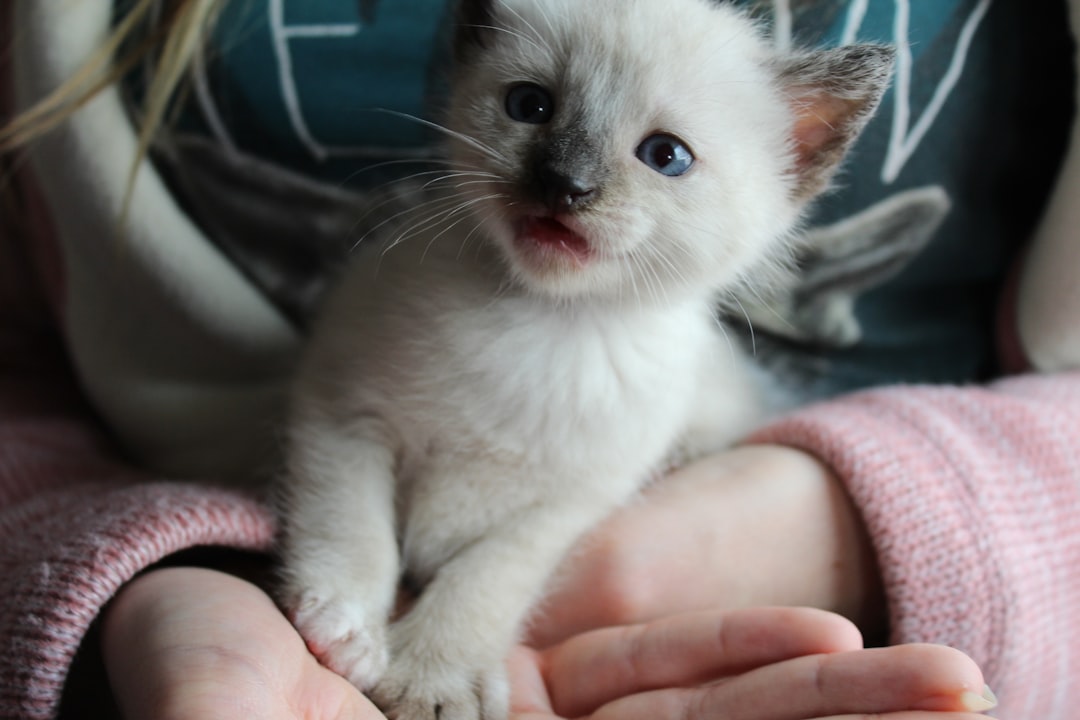
Features to Look for in a Heated Cat House
When selecting the perfect heated cat house outdoor for your feline friend, several crucial features may impact your choice. An ideal cat house should blend comfort, functionality, and safety to create the perfect outdoor sanctuary. Here are key features to consider:
Insulation Quality
- Material Types: Look for heated cat houses built with insulating materials like foam or thermal reflective materials.
- Temperature Regulation: Good insulation helps maintain the internal temperature, keeping your cat warm even in extreme weather.
Heating Source
- Electric Heating: Most heated cat houses use electric heaters for consistent warmth. Ensure the unit offers temperature regulation settings.
- Self-Heating: Some models utilize mylar or reflective insulation that captures and retains body heat without electricity.
Size and Design
- Spaciousness: Make sure the house is spacious enough for your cat to lie down, stretch, and move comfortably. A cramped space may discourage regular use.
- Design Features: Look for weather-resistant roofs, scratching posts, and entryways that ensure your pet’s comfort.
Ease of Access
- Door Size: Ensure the entrance is large enough for your cat to enter and exit comfortably. A flap door can provide both shelter and privacy.
- Multiple Entrances: Consider models with two openings to allow for quick escapes in case of danger.
Outdoor Durability
- Weather Resistance: The cat house construction material should be durable and weather-resistant. Look for treated wood, weather-proof plastics, or galvanized metal.
- UV Protection: The exterior should resist UV damage to prevent it from heating excessively or fading under sunlight.
Additional Features
- Removable Roof: A removable roof or lid makes cleaning more manageable, ensuring a hygienic environment for your pet.
- Non-Slip Feet: Ensure that the house has non-slip feet or bases to withstand wind and maintain stability in various weather conditions.
Safety Mechanisms
- Electrical Safety: For electrical models, keep an eye on safety features like chew-proof cords and power-off mechanisms that prevent overheating.
- Secure Structure: The house should maintain robust construction to keep out predators and harsh weather.
Comparison Table of Features
| Feature | Importance | Description |
|---|---|---|
| Insulation Quality | High | Good insulation retains heat; look for foam or reflective materials. |
| Heating Source | High | Electric or self-heating; both should be efficient and safe. |
| Size and Design | Medium | Spacious enough for comfort; consider design features for play. |
| Ease of Access | High | Proper entrance size and multiple openings enhance usability. |
| Outdoor Durability | High | Weather-resistant materials and UV protection are essential. |
| Additional Features | Medium | Features like a removable roof or non-slip feet add practicality. |
| Safety Mechanisms | High | Chew-proof cords and secure construction ensure safety. |
Choosing the right features in your heated cat house outdoor is essential for your cat’s comfort and safety during colder months. Each component should cater to your pet’s needs, offering warmth as well as security against harsh weather conditions. When investing time and resources into a heated house, remember to weigh these features thoughtfully to find a perfect fit for your beloved feline companion.
Setting Up Your Heated Cat House for Optimal Comfort
Creating a warm and inviting environment for your feline friend is essential, especially during colder months. A heated cat house outdoor can provide a perfect sanctuary, protect against harsh weather, and ensure your cat feels safe and secure. Here’s a comprehensive guide on how to set up your heated cat house to achieve optimal comfort.
Choose the Right Location
The first step in creating a cozy space is selecting the right spot for your heated cat house. Here are some location considerations:
- Sheltered Area: Position the house in a location shielded from wind, rain, and snow, such as under a porch or near a garage.
- Sunshine Exposure: If possible, select a spot that receives morning sunlight. Natural warmth can supplement the heater when the sun is strong.
- Elevated Surface: Consider placing the cat house on a platform or lift it a few inches off the ground to avoid moisture from the earth accumulating.
Insulating Your Heated Cat House
While the heating element will provide warmth, further insulation can enhance the comfort significantly. To insulate your heated cat house:
- Use thermal blankets or rug pads inside the house.
- Seal gaps with insulating foam to prevent drafts.
- Consider a double-walled design if you’re building or buying a custom house. This will trap warmth effectively.
Organizing the Interior
The interior layout can affect your cat’s ability to get comfortable. Here’s how to organize it:
- Cozy Bedding: Add soft, fluffy bedding. Materials like fleece or faux fur are excellent for retaining heat. Avoid cotton as it absorbs moisture.
- Hideaways: Cats love to feel secure. Create a small hideaway or nook using blankets or small boxes for your cat to retreat when feeling stressed.
- Multiple Entrances: Ensure there are two entrances. This provides an escape route and guarantees ventilation without compromising warmth.
Setting the Heating Element
To achieve optimal temperature control, consider the following:
- Temperature Setting: If your heated cat house has adjustable settings, manage the temperature based on the current weather conditions. Aim for a comfortable range between 70°F to 80°F (21°C to 27°C).
- Heating Pads: If you’re utilizing a heating pad, ensure it’s designed specifically for pets and is safe for continuous use. Place it to cover about one-third of the interior to create a gradient temperature for warmth without overwhelming heat.
- Power Source: Secure the power cord safely. Use outdoor-rated extension cords and ensure no sharp edges can cause potential damage.
Creating an Enriched Environment
Enhance your cat’s experience within the heated space by adding interactive elements:
- Toys: Include a few toys to keep them entertained during cold days.
- Scratching Area: A small scratching mat within the house can help maintain their claw health while keeping them entertained.
- Scent Familiarization: Use familiar blankets or items that smell like home to make the environment feel safer and more comfortable.
Regular Checks and Maintenance
After setting up, it’s imperative to regularly inspect the area:
- Check for Safety Hazards: Ensure there are no wires or cords exposed to prevent chewing or potential shock.
- Monitor Temperature: Use a thermometer inside the house to track temperature fluctuations, particularly in fluctuating weather.
- Clean Regularly: Keep the cat house clean and dry to maintain hygiene and comfort for your feline.
Setting up your heated cat house outdoor properly not only provides warmth but also a sense of security, ensuring your cat can enjoy the comforts of home, even in the midst of winter.
Safety Considerations for Heated Cat Houses
When it comes to providing warmth and comfort for your feline friends, heated cat houses offer an ideal solution for outdoor environments. However, ensuring the safety of your cat is paramount. Here are critical safety considerations to keep in mind when setting up a heated cat house outdoor:
1. Electrical Safety
- Wiring and Materials: Choose a product with insulated wiring. Check for any frayed or exposed wires which can pose a risk of electric shock or fire.
- Weatherproofing: Look for heated cat houses that are designed to be resistant to weather elements. Waterproofing will prevent moisture damage that could disrupt electrical components.
- GFCI Outlets: Use Ground Fault Circuit Interrupter (GFCI) outlets to prevent electric shocks. These outlets automatically turn off in the event of a ground fault.
2. Temperature Regulation
- Built-in Thermostat: Opt for heated cat houses with automatic temperature regulation to ensure they won’t overheat. This feature helps maintain a comfortable environment.
- Heat Output Control: Some heated houses come with adjustable heat settings. This provides flexibility in extreme temperature conditions and caters to the particular needs of your cat.
3. Structural Stability
- Base Design: Ensure that the cat house has a stable and sturdy base. This prevents tipping over, which can occur due to wind or playful antics from your cat.
- Anchoring: If you are in a windy area, consider anchoring the cat house securely to the ground using tie-downs or weights.
4. Ventilation
- Proper Airflow: Good ventilation is crucial. Heated units should have screens or vents that allow for proper airflow, preventing the buildup of excessive heat or moisture inside.
- Escape Routes: Design the cat house with openings that allow your pet to safely exit in case of any complications or if they feel uncomfortable.
5. Materials and Design
- Non-toxic Materials: Choose a heated cat house made from non-toxic and pet-safe materials. This is crucial since cats often chew or scratch surfaces.
- Easy to Clean: Look for materials that are easy to clean. This ensures that you can regularly maintain hygiene within the shelter, reducing the risk of diseases.
6. Regular Inspections
- Routine Checks: Frequently inspect the exterior and interior of the heated cat house for any signs of wear and tear. This could include checking for rust, damaged cords, or any pest invasions.
- Maintenance Schedule: Establish a maintenance schedule for all components of the heated unit to prolong its life and uphold safety standards.
Summary of Key Safety Considerations
| Safety Aspect | Recommendations |
|---|---|
| Electrical Safety | Use insulated wiring; GFCI outlets; weatherproofing. |
| Temperature Regulation | Look for units with thermostats and adjustable settings. |
| Structural Stability | Ensure a stable base; consider anchoring options. |
| Ventilation | Include airflow systems and escape routes. |
| Materials and Design | Use non-toxic materials; ensure easy cleaning. |
| Regular Inspections | Conduct routine checks and set up a maintenance schedule. |
Taking these safety considerations into account will not only safeguard your beloved pet but also enhance their overall outdoor experience in a heated cat house outdoor. Keeping your furry friend warm and secure is essential, and diligence in these areas can lead to a well-protected and happy cat.
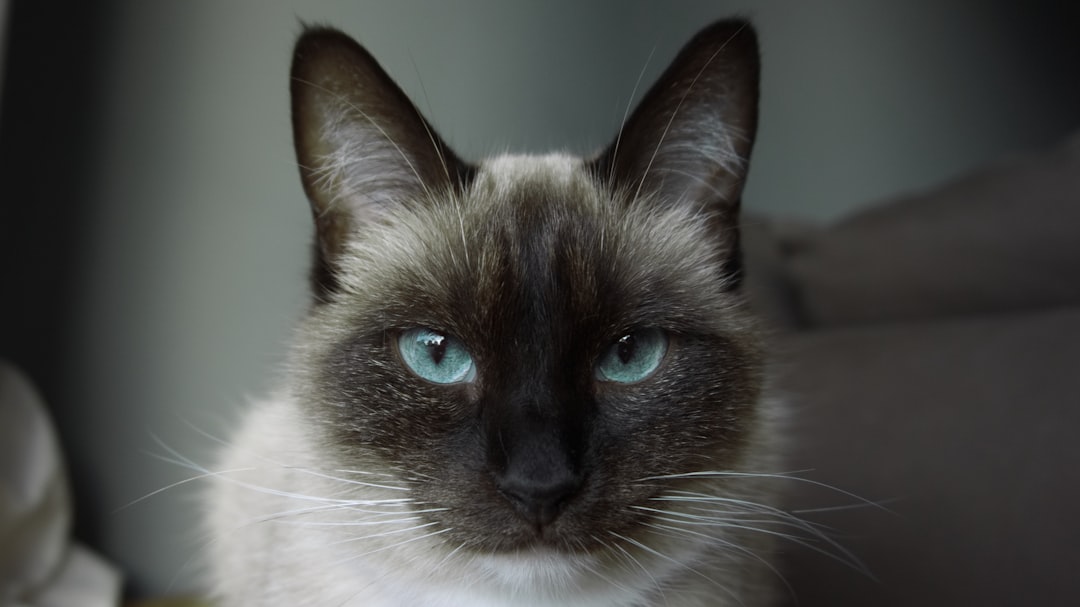
Maintaining Your Heated Cat House
To ensure the longevity and effectiveness of your heated cat house outdoor, regular maintenance is key. Just like any other home item, proper care will not only enhance its functionality but also ensure a comfortable and safe environment for your feline friend. Here’s everything you need to know about maintaining your heated cat house:
Regular Cleaning
Exterior and Interior Cleaning:
- Wipe Down Surfaces: Use a mild soap and water solution to clean both the inside and outside surfaces of the heated cat house.
- Remove Debris: Regularly check for leaves, dirt, and other debris that may accumulate around the house and remove it.
Bedding Care:
- Wash Bedding: If your cat house is equipped with blankets or bedding, these should be regularly washed to prevent odor, bacteria, and pest build-up.
- Replace as Necessary: Consider replacing older bedding materials that may become worn out or less comfortable over time.
Electrical Components Check
- Inspect Heating Elements: Regularly check the heating element to ensure it works properly. This includes checking for any frayed wires or exposed electric components.
- Test Safety Features: Ensure that any safety shut-off mechanisms work as intended. This will prevent overheating and possible fire hazards.
- Power Supply Evaluation: Check that the power supply and connections are secure and not damaged.
Weatherproofing
- Check for Wear and Tear: Inspect the roof and other exterior surfaces for signs of damage caused by weather. Look for cracks, holes, or degradation of materials.
- Seal Openings: Ensure that any vents or openings in the heated cat house are properly sealed to protect against wind, rain, and cold air infiltration.
Seasonal Preparations
Winter Preparation:
- Insulation Checks: In preparations for colder months, review the insulation quality to ensure optimal warmth. Adding additional insulating materials can be a good measure.
- Heating Functionality Test: Before the temperature drops, test the heating functionality to confirm that warmth is distributed evenly.
Summer Readiness:
- Ventilation Maintenance: Make sure vents are functioning to prevent overheating in warmer months.
- Shade Setup: Set up shades to protect the heated cat house from direct sunlight during peak summer times.
Health Monitoring
- Regular Inspections: Inspect the inside of the cat house for any signs of pests, such as fleas or ticks, which can be attracted by bedding or leftover food.
- Behavioral Changes: Pay attention to any behavioral changes in your cat; if they avoid the heated cat house, it may indicate a need for maintenance or repairs.
Maintenance Schedule Table
| Maintenance Task | Frequency | Notes |
|---|---|---|
| Clean surfaces | Weekly | Use mild soap solution. |
| Wash/change bedding | Bi-weekly | Use pet-safe detergents. |
| Inspect heating elements | Monthly | Look for fraying or damage. |
| Seasonal insulation check | Twice yearly | Before winter/summer. |
| Pest inspection | Monthly | Check for pests or debris. |
By adhering to these maintenance tips, your heated cat house outdoor will provide a consistent and inviting shelter for your cat throughout the year, ensuring their comfort and safety while guarding against wear and vulnerabilities over time.
Comparing Popular Brands of Heated Cat Houses
When shopping for a heated cat house outdoor, choosing the right brand is paramount to ensure you’re providing the best shelter for your feline companions. There are several brands that stand out in the market, each offering unique features tailored to different needs. In this section, we will compare popular brands based on essential criteria like design, heating capability, durability, and customer reviews.
Key Brands in the Heated Cat House Market
K&H Pet Products
- Design: Warm, insulated design that provides a cozy retreat for pets.
- Heating Capability: Uses a 20-watt heater to keep temperatures warm, even in the coldest weather.
- Durability: Constructed with sturdy, weather-resistant materials to withstand outdoor climates.
- Customer Reviews: Highly rated for effectiveness and ease of assembly.
PetFusion
- Design: Stylish and contemporary, often incorporating high-quality wood and synthetic materials.
- Heating Capability: Features a systemic heating pad that automatically regulates temperatures.
- Durability: Built with rot-resistant wood and has a water-resistant roof.
- Customer Reviews: Praised for aesthetic appeal and insulation properties.
Aspen Pet
- Design: Simple, functional design that focuses on comfort.
- Heating Capability: Effective heating pads that can maintain warmth even in sub-zero temperatures.
- Durability: Comes with durable waterproof materials, ensuring longevity.
- Customer Reviews: Noted for affordability and easy cleaning features.
Busy Cat
- Design: Features a multi-layered design, providing extra warmth through insulation.
- Heating Capability: Equipped with a 40-watt heating panel for robust warmth.
- Durability: Known for its ruggedness, suitable for extreme conditions.
- Customer Reviews: Fans appreciate the spacious interiors and overall comfort.
Comparison Table
| Brand | Heating Capability | Durability | Price Range | Customer Ratings |
|---|---|---|---|---|
| K&H Pet Products | 20 watts | Weather-resistant | $50 – $80 | 4.7/5 |
| PetFusion | Automatic System | Rot-resistant wood | $70 – $120 | 4.6/5 |
| Aspen Pet | 30 watts | Waterproof | $40 – $70 | 4.5/5 |
| Busy Cat | 40 watts | Extremely durable | $60 – $100 | 4.8/5 |
Choosing the Right Brand
When considering which brand to select for a heated cat house outdoor, it’s important to reflect on your cat’s specific needs and the outdoor environment. Here are a few aspects to keep in mind:
- Climate: If you live in an area with harsh winters, look for a brand that offers higher wattage heating solutions, like Busy Cat.
- Space: If you have multiple cats or larger breeds, opt for brands like PetFusion, which provide more spacious designs.
- Budget: Ensure that your choice fits within your financial plan while still meeting safety and comfort standards.
- Reviews: Always check user feedback on platforms like Amazon or pet specialty stores. The experiences of other cat owners can provide invaluable insight into performance and durability.
"In the battle against the elements, a well-chosen heated cat house can transform your outdoor space into a haven for your beloved pets. Choose a brand that aligns with your specific requirements and ensures maximal comfort and safety."
By comparing these popular brands and analyzing their features, you will be better equipped to invest in a heated cat house outdoor that your pets will love.
Frequently Asked Questions about Heated Cat Houses
Heated cat houses have gained popularity as an essential shelter solution for outdoor cats, especially during harsh weather conditions. Here we address some of the most frequently asked questions to help you better understand these cozy feline retreats.
1. What is a heated cat house?
A heated cat house is a specially designed shelter that utilizes heating elements to provide warmth and comfort for outdoor cats. Typically made from insulated materials, these houses help maintain a safe and comfortable environment during cold weather, ensuring that your feline friends remain warm and cozy throughout the winter months.
2. Are heated cat houses safe for outdoor use?
Yes, heated cat houses are designed with safety in mind. Most models include:
- Low voltage heating pads: These are safe for extended use and minimize the risk of electric shock.
- Weatherproof materials: Ensuring the house is resistant to rain, snow, and wind while being easy to clean.
- Thermal insulation: Keeping the heat inside without creating fire hazards.
However, always ensure that the units are properly installed and routinely checked for any wear that could pose safety risks.
3. Can heated cat houses be used in the summer?
While heated cat houses are primarily designed for winter use, many models also offer ventilation features that allow them to be used in summer. Look for houses that include removable panels or cooling shelves to enhance airflow and prevent overheating during warmer months.
4. How do I choose the right size of a heated cat house?
Selecting the right size is crucial for comfort. Generally, it’s recommended to consider:
| Cat Size | Recommended House Size (Length x Width x Height) |
|---|---|
| Small | 18" x 24" x 18" |
| Medium | 20" x 30" x 22" |
| Large | 24" x 36" x 26" |
Ensure the house is large enough for your cat to turn around and lie down comfortably but not so large that it compromises heat retention.
5. How much electricity do heated cat houses consume?
Most heated cat houses are designed to be energy-efficient. On average, they consume between 20 to 40 watts of power, depending on the model and temperature settings. This translates to a minimal addition to your electricity bill, particularly compared to other heating solutions.
6. How often should I clean my heated cat house?
Regular cleaning of your heated cat house is essential to keep it hygienic and inviting for your cat. Here’s a recommended cleaning schedule:
- Weekly: Remove bedding, sweep out debris, and wipe down surfaces with pet-safe cleaners.
- Monthly: Deep clean with soap and water, paying special attention to the heating element and electrical connections.
7. Where should I place my heated cat house?
Optimal placement can significantly enhance comfort and safety. Consider the following tips:
- Sheltered Locations: Position the house against a wall or under an overhang to protect it from direct wind and rain.
- Away from High-Traffic Areas: Limit disturbances from people or animals that might scare your cat.
- Accessible and visible: Ensure it is easily accessible for your cat while still being discreet enough to offer comfort.
8. Do I need to provide additional bedding for the heated cat house?
While many heated cat houses come with built-in bedding, it’s often beneficial to add extra layers. Use materials like straw, fleece blankets, or thermal pads to improve insulation and comfort. Change the bedding routinely to maintain hygiene.
By addressing these frequently asked questions, we hope to help you decide on the best heated cat house for your outdoor companions. Always remember, providing a warm and safe environment can immensely enhance your cat’s quality of life during colder months.
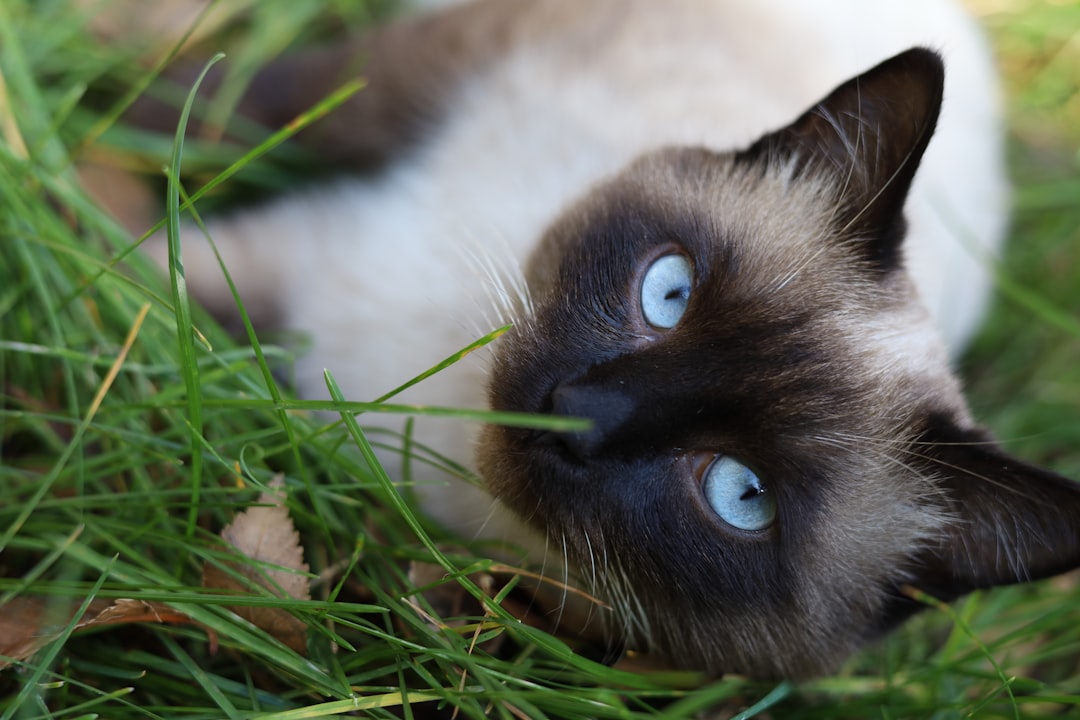
Frequently Asked Questions
What are heated cat houses, and how do they work?
Heated cat houses are specially designed shelters that provide warmth and comfort for outdoor cats during harsh weather conditions. They typically feature an insulated structure to retain heat, often incorporating heating pads or other heat sources that keep the interior at an optimal temperature. These houses are generally constructed from durable, weather-resistant materials to ensure longevity and protection against the elements, helping to keep stray and outdoor cats safe and cozy.
How do I choose the right size heated cat house for my cat?
Selecting the appropriate size heated cat house for your feline friend involves considering their size and behavior. The house should be large enough for your cat to comfortably move around, lie down, and curl up, yet small enough to retain heat effectively. Measure your cat’s length and height when sitting or lying down, and choose a house that offers at least a few extra inches in each dimension to ensure your cat feels secured without unnecessary cold air penetrating the shelter.
What features should I look for in a heated cat house?
When shopping for a heated cat house, it’s essential to look for several key features. Firstly, select a model that is well-insulated to retain heat, preventing cold drafts. The heating source should be safe, energy-efficient, and designed specifically for pet use. Additionally, consider houses with a removable, washable cover for easy cleaning and those with raised floors to keep your pet dry and away from the cold ground. Lastly, ensure the entrance is sheltered to block wind and precipitation while allowing easy access.
Are heated cat houses safe to use outdoors?
Yes, heated cat houses are designed to be safe for outdoor use. Most models come equipped with features like chew-proof cords and waterproof materials to protect them from elements. However, it’s crucial to ensure that the heating source is low-wattage and sheltered to prevent any fire hazard. Regularly check the house for wear, and ensure proper functionality to maintain a safe and healthy environment for your outdoor cat.

